I understand now the people who find something so disturbing on their family tree that they drop genealogical research, forever.
In my 40 years of researching my (and clients') family histories, I have come across all manner of horrifying events: murder, suicide, incest, illegitimacy, divorce, abandonment, poverty, and all kinds of heartbreak. Nothing has phased me.
Until now.
For the last 18 months I have been compiling my portfolio for certification as a genealogist. For my Kinship Determination Project, I chose to write about 3 generations of the Beem family. The final generation of this study was my grandfather's favorite uncle, John Myron Beem. He was born in Newaygo County, Michigan in 1877 and was appointed the probate judge in 1921. He was an outstanding member of the community: upright, honest, God-fearing, and in fact my father John Chase Reed was named for him.
The first stop on my research trip was the Grand Rapids library, where I asked (among other things) for any books they had on Newaygo County. Sure enough, there was the second volume. On page 10, in the very first chapter, was this photo:
After a couple of days of disbelief, I decided to find out more. I googled "Ku Klux Klan in Michigan," which led me to an article on Lansing Online that was even more horrifying: in 1992 a stash of KKK memorabilia robes, and a set of membership cards were found in an attic in Newaygo County; the librarian at the Clarke Historical Library, Central Michigan University, had bought the cards for their collection. That article also referenced a book about the KKK in Newaygo County, called Everyday Klansfolk: the KKK in 1920s Michigan. I found it on Amazon, and even though the Kindle edition was almost $15, I downloaded and started reading it. I searched for the name Beem, and was a little relieved when I didn't find it, but as I read my disquiet grew. When I read about all the prominent citizens of Fremont who were joining, including members of the board of education, the chief of police, the city clerk, the sheriff and his deputies, and the probate judge, my heart sank.
I had rearranged my trip so that I could visit the Clarke Historical Library and take a look at those membership cards. But that wouldn't come until the very end, and in the meantime, I kept reading. While I was visiting my cousins (saying nothing about my suspicions), walking along Lake Michigan, and eating dinner at the Cherry Hut, I kept reading. I learned that the KKK of the 1920s was very much about being "100% white Protestant American," and was (among other things) anti-Catholic, anti-Jew, and anti-immigrant. In addition, in small towns like Fremont, people seemed to join for the social gathering aspect of it, to be part of their community. I was outraged to read that a number of Fremont's ministers joined, and were enthusiastic about the Klan from the pulpit (including John Beem's minister of the Church of Christ, Rev. J. Booth), I was heartened to read that the only church in town to refuse their advances was St. Mark's Episcopal Church.
In addition to wanting to know how on earth the Klan could become so strong in Michigan during this time, I also wanted to understand why it eventually died out. So I got another book: One Hundred Percent American: The rebirth and decline of the Ku Klux Klan in the 1920s. This was another good look at the Klan, not just in Michigan, but nationwide.(Although when I read a quote about one woman in Indiana who enthused about how fun it was to burn a cross, "just a fun thing to do" my reaction visceral. How absolutely horrible.)
At the tail end of my trip, I finally reached the Clarke Historical Library on the campus of CMU - after some misdirection from my GPS, and driving cautiously through hordes of backpack-toting students. I went into the library, presented my ID and filled out the paperwork, and waiting for them to get the boxes. While I was waiting I made a list of other names (besides Beem) that I was looking for: Olney, Miller, Reed, Balcom - some of John Beem's extended family. By that time, I was 95% sure that my great-uncle John Myron Beem had indeed been a member.
As you can imagine, it took me some time to process and assimilate all this new information about my family. When I returned home to Washington, and started writing, I decided to take another look at John's membership card - and received another (smaller) bombshell. I saw that he had been recruited by P. Anderson, which rang a very faint bell in my mind. I went to Ancestry to look for P. Anderson in Newaygo County in 1920, and following the breadcrumbs, realized that John Beem had been recruited by his niece Marian Olney Anderson's husband Percy; they are both in my Legacy database. When I looked at Percy's Find A Grave entry, another bell rang, louder this time. Percy's brother was Ledford Anderson - the secretary-treasurer of the Newaygo County Klan, whose stash of KKK stuff had been discovered in his attic in 1992.
So now, almost a month after this discovery, I've accepted this as one part of my family history. In all of my background reading, I kept remembering Elizabeth Shown Mills' definition of "presentism": the interpretation of the past by present standards.In all of my background reading, the thought kept coming to me that these people were doing what they thought was right. They were doing the best they could with the information they had. And in the end, that's all any of us can do.
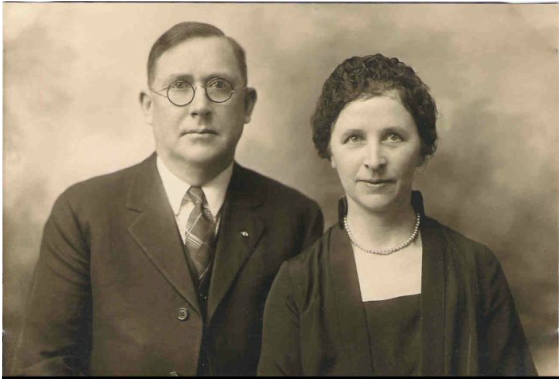
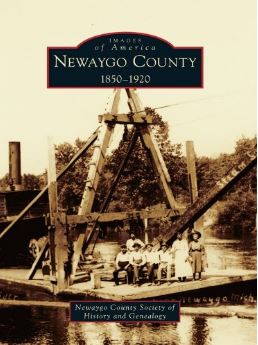
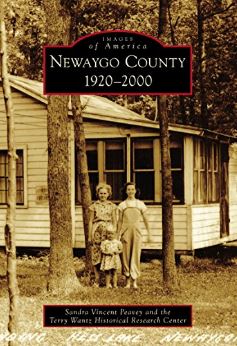

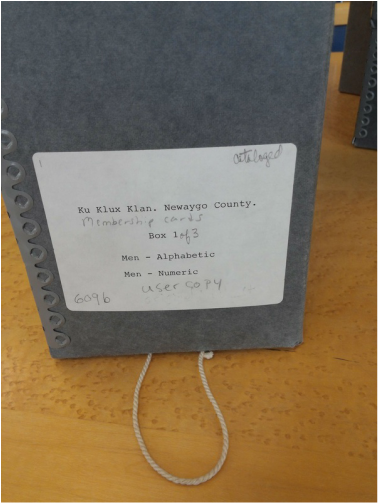
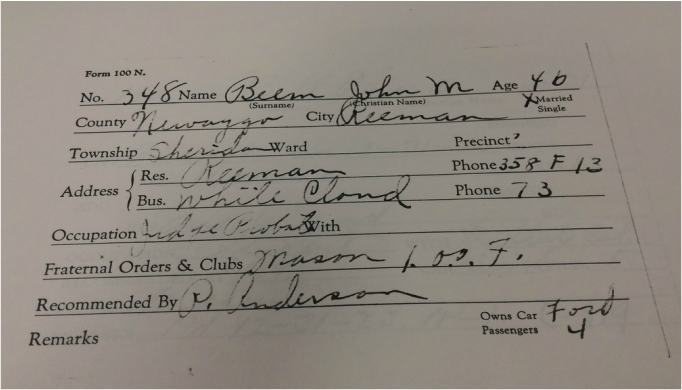
 RSS Feed
RSS Feed